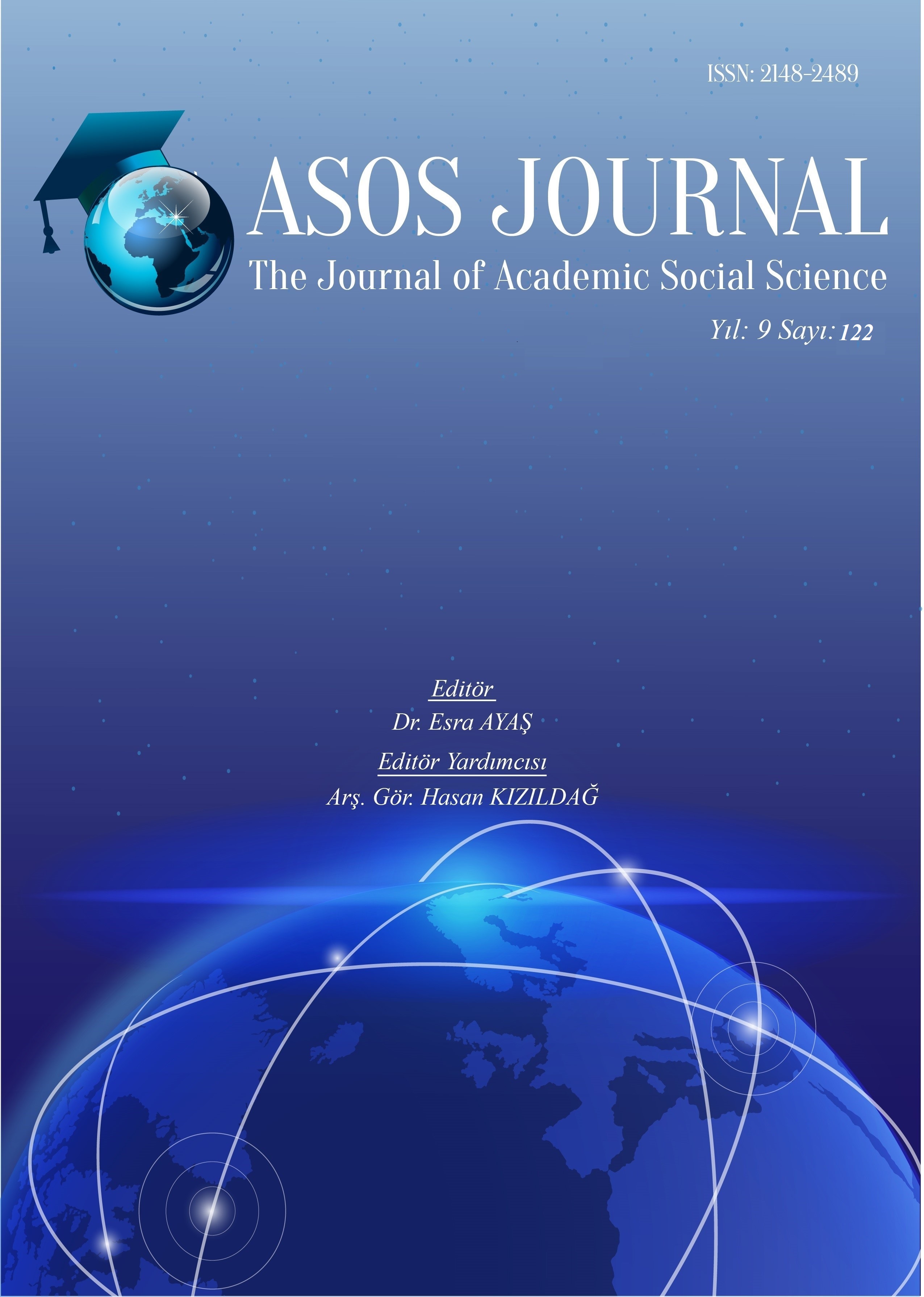Author :
Abstract
Bu makale yabancı dil olarak İngilizce sınıflarında edebiyat eserlerinin kullanımının önemini vurgulamaktadır. İngilizce öğretiminde edebiyat, ders müfredatının ana konusu da olabilir yalnızca dili öğretmek için kaynak materyal olarak da kullanılabilir. İkinci dil öğretimi esnasında, dilbilgisi ve kelime alıştırmaları değişik türdeki edebiyat eserleri aracılığı ile hazırlanıp özendirilebilir. Edebiyat metinleri hem dil hem kültür alanında zengin olduğundan, kısa hikâye, roman, şiir ve drama, öğrencilerin yeni bir kültürü keşfetmesi amacıyla otantık materyal olarak İngilizce dil öğretimi sınıflarında kullanılabilir. Öğrenciler, dil sınıflarında edebi eserler çalışılırken, değişik dil kullanımlarına maruz kaldıklarından, öğrencilerin dil farkındalığı da artar. Lazar’a (1993) göre edebiyat öğrencileri dil öğrenmeye teşvik eder. Bu sebeple, dil öğretimi sınıflarında edebiyat eserlerini çalışmanın dile büyük katkısı olduğu inkâr edilemez; dil öğretimi sınıflarında uygun edebi eserler seçilmeli ve öğrencilere sunulmalıdır.
Keywords
Abstract
This article emphasizes the benefits of using literary texts in EFL classes. Literature can be the content of the course itself or can be used as a resource to teach English language. While teaching the second language, grammar and vocabulary activities can be presented and promoted through different genres of literary texts. As literary texts are highly rich both in content and language, short stories, novels, poems and plays can be used as authentic materials to help language learners to discover another culture in EFL classes. While studying literary texts in language classes, students’ language awareness is expanded as they encounter different usages of language. Lazar (1993) states that for language acquisition, literature is a stimulus for students. Therefore, it is just impossible to deny the linguistic efficacy of using literary texts in language classes; appropriate literay texts need to be selected and presented to language learners in EFL classes.
Keywords
- Asefa H.T. (2015). Using Literature as a Tool for Teaching English Language: Animal Farm in the EFL Classroom. International Journal of Science and Research, 6(1), 1812 – 1819.
- Campbell, K. (2007). Less is more: Teaching literature with short texts, grades 6-12. Portland, Me: Stenhouse Publishers.
- Carter, R., & Long, M. N. (1991). Teaching literature. Harlow: Longman.
- Collie, J., & Slater, S. (2011). Literature in the language classroom: A resource book of ideas and activities. Cambridge: Cambridge Univ. Press.
- Eagleton, T. (1996). Literay Theory: An Introduction. Mineapolis: University of Minnesota Press.
- Grabe, W., & Stoller, F.L. (1991). Reading for academic purposes: Guidelines for the ESL/EFLTeacher. Celce-Murcia, M. (1991). Teaching English as a second language (187-203). Mass: Heinle.
- Joyce, J. (1994). Dubliners. Penguin Books: London.
- Kelner, L. B. (1993). The Creative Classroom: A Guide for Using Creative Drama in the Classroom, Prek-6. Portsmouth, NH: Heinemann.
- Lazar, G. (1993). Literature and language teaching: A guide for teachers and trainers. Cambridge: Cambridge Univ. Press.
- Maley, A., & Duff, A. (2013). Drama techniques in language learning. Cambridge: Cambridge University Press.
- Paran, A., & Robinson, P. (2016). Literature. Oxford: Oxford University Press.
- Pardede, P. (2011). Short Stories Use in Language Skills Classes: Students’ Interest and Perception. Zacharias, N. T., Manara, C., & ProQuest (Firm). Bringing literature and linguistics into EFL classrooms: Insights from research and classroom practice (101116). Newcastle upon Tyne: Cambridge Scholars Pub.
- Selden, R. (1989). A Reader’s Guide to Contemporary Criticism. New York: Harvester Wheatsheaf.





